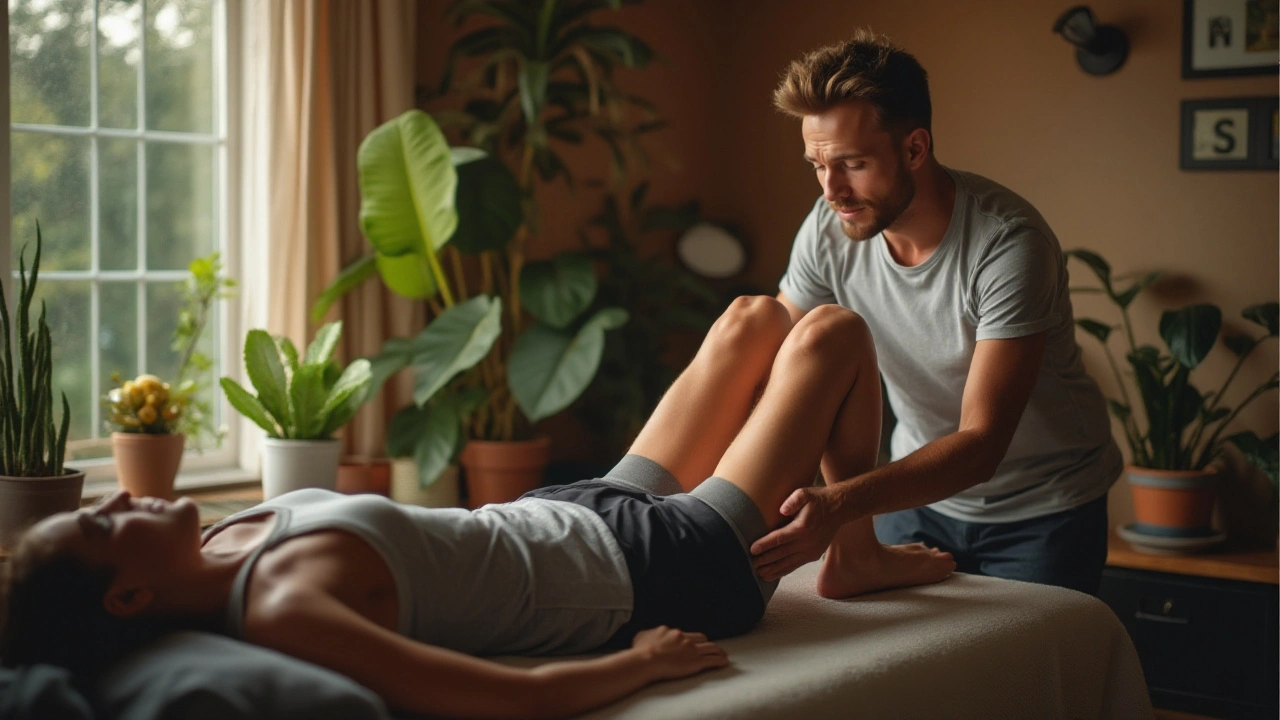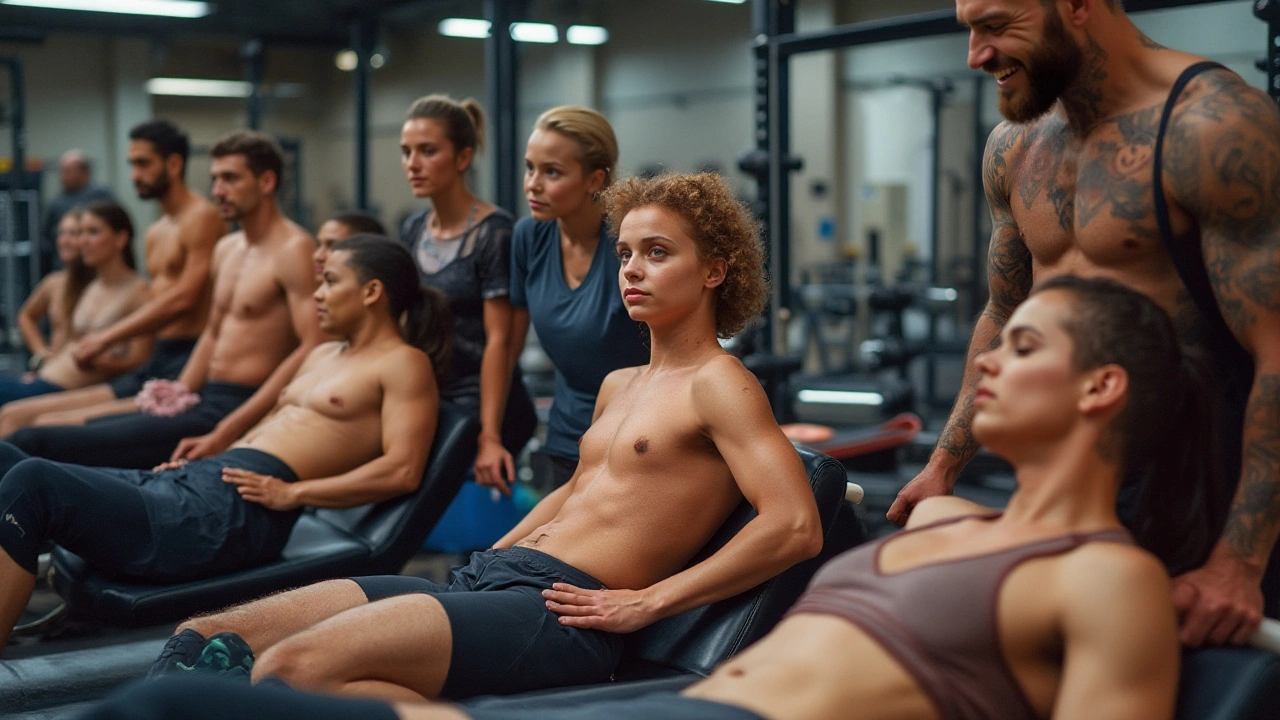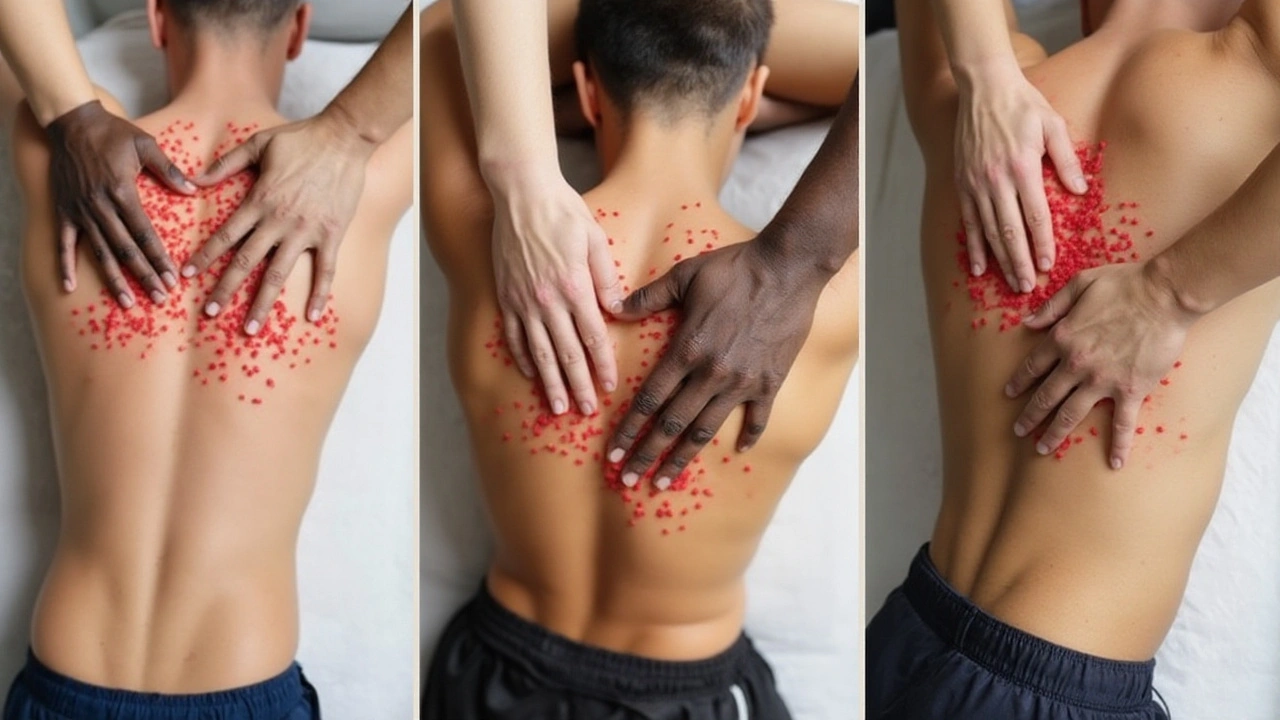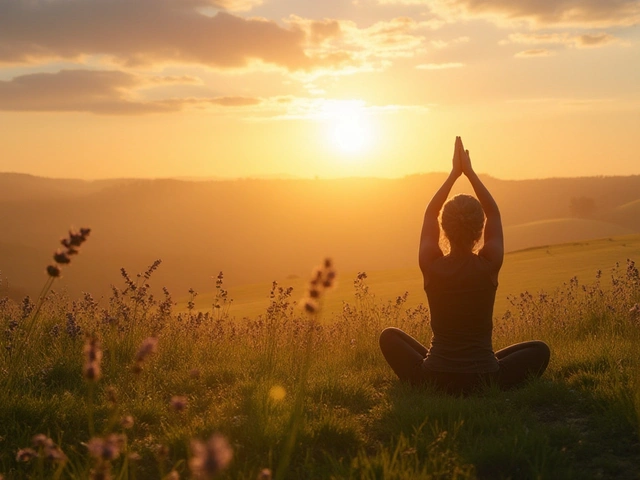
Sports massage is more than just a luxury treat. For those who push their bodies to the limit, it's a crucial part of an effective recovery strategy. It's not just for professional athletes; even weekend warriors and active hobbyists can benefit from the unique methods and outcomes sports massage offers.
Unlike a typical massage, sports massage is designed to target areas of the body that are overused and stressed from repetitive and often aggressive movements. It's tailored to support healing and prevent further damage, making it a fantastic tool for anyone who enjoys staying active. Through a blend of techniques, sports massage can help speed up the recovery process, improve flexibility, and reduce the chance of injury, offering a comprehensive approach to holistic health.
- Understanding Sports Massage
- Benefits of Sports Massage
- Techniques and Tips
- Incorporating Sports Massage into Routine
Understanding Sports Massage
Sports massage is a specialized form of massage therapy that was initially developed to help athletes prevent and recover from injuries. Over time, this technique has proven beneficial not only to athletes but also to regular fitness enthusiasts, anyone engaging in physically demanding activities can reap its benefits. The primary focus of sports massage is attending to the needs of muscles used for a particular sport or activity, offering targeted relief and facilitating muscle healing.
These techniques emphasize on manipulating soft tissues through a range of strokes and approaches, such as deep tissue massage, compression, and stretching techniques. Throughout the massage, therapists are actively working to help increase circulation, which then allows more oxygen and nutrients to reach muscles quicker and more efficiently. This is a key point when it comes to recovery as it aids in the removal of lactic acid and other metabolic waste, tools that are essential for recovering quickly.
It's worth noting that sports massage is distinctly different from traditional therapeutic massage. While a regular massage may focus broadly on relaxation and stress relief, sports massage targets problem areas often characterized by tension and restricted movement. Understanding this distinction helps individuals manage expectations and understand the physiological benefits they aim to achieve.
An interesting fact is that sports massage has been a part of Olympic training since the first modern games in 1896. Olympic athletes have long championed the benefits of incorporating massage in training as a way to keep their bodies in top form, helping them outperform their expectations when it matters most. As noted in a recent study, regular sports massage sessions can reduce the chance of injury by up to 30%, a statistic that highlights its crucial role in athletic performance.
Understanding the core principles of sports massage involves recognizing its integration with other recovery strategies. For optimal results, it’s often combined with other practices like physiotherapy, strength and conditioning exercises, and nutritional planning. These methods come together in a holistic approach aimed at enhancing overall athletic performance, as well as ensuring long-term health and vitality of the muscles and joints.
“In a study published in the Journal of Sports Medicine, sports massage was shown to decrease heart rate and blood pressure post-exercise, indicating its effectiveness in promoting a state of relaxation and recovery after intense physical activity.”
To summarize, sports massage is not just a luxury, but a pivotal part of an athletic or active lifestyle. By emphasizing targeted muscle recovery, enhancing circulation, and assisting in injury prevention, sports massage serves as a cornerstone in the realm of sports therapy and rehabilitation, offering undeniable benefits for both professional athletes and recreational gym-goers alike.
The Importance of Technique
The success of sports massage in treating injuries and promoting healing hinges fundamentally on the technique employed by the therapist. A skilled therapist will customize the massage to suit individual needs, taking into consideration the athlete’s sport, areas of tension or pain, and the specific outcome they wish to achieve. Techniques used in sports massage can vary and may include effleurage to start warming up the muscles, petrissage for deeper muscle manipulation, and friction to foster improved blood flow. These techniques work in concert to deliver a comprehensive treatment that addresses muscle recovery from several angles.

Benefits of Sports Massage
Sports massage has become a go-to remedy for athletes and fitness enthusiasts eager to optimize their recovery. After an intense workout, your muscles might feel tight and fatigued, and that's where sports massage comes in handy. One of the primary benefits is its ability to enhance blood circulation. When massage therapists apply pressure, it helps improve blood flow which supports faster healing and reduces muscle soreness. This increased circulation ensures that oxygen and nutrients are delivered efficiently to muscle tissues, promoting quicker recovery and helping to restore energy levels.
Another remarkable benefit is the impact on flexibility. Regular sports massage can significantly improve muscle flexibility, making it easier to achieve the desired range of motion. This improvement is crucial for athletes who rely on their bodies to perform at peak levels. Flexibility also plays a key role in preventing injuries. By maintaining limber muscles, individuals can reduce tears and strains that often result from overexertion or awkward positions during physical activities. According to a study published in the Journal of Sports Medicine, athletes who incorporated regular sports massage into their routines reported a noticeable shift in their ability to perform complex movements with ease.
Sports massage also boasts mental benefits. After exhausting physical efforts, the mind can become stressed or anxious. A well-conducted sports massage helps reduce levels of stress hormones like cortisol while boosting the production of serotonin and dopamine, hormones responsible for a sense of well-being. As many professional athletes like Serena Williams attest, maintaining good mental health is as important as physical health. Williams once commented, "My body is my court, and sports massage is my referee, keeping everything in check," highlighting its integral role in her daily regimen.
The use of specific massage techniques can also help in reducing the build-up of lactic acid, a common cause of muscle fatigue and soreness. Techniques such as kneading and friction are particularly effective in dispersing lactic acid accumulations in the muscles. This allows athletes to bounce back faster and continue their training without prolonged downtime. Furthermore, by targeting trigger points, sports massage can alleviate pain in specific areas, offering a degree of relief that cannot always be achieved through rest or medication alone. For data enthusiasts, here is a small insight into how athletes perceive sports massage:
| Benefit | Percentage of Athletes Reporting Improvement |
|---|---|
| Improved Circulation | 85% |
| Flexibility | 78% |
| Stress Relief | 72% |
With all these benefits, it's no surprise that sports massage has grown in popularity across various sports disciplines. Whether you're a marathon runner or a weekend cyclist, incorporating routine sports massage sessions can yield benefits that significantly impact your recovery and enhance performance potential. In the rejuvenating world of sports massage, every session offers a step closer to achieving athletic excellence.

Techniques and Tips
Diving into the world of sports massage, there are several techniques that can maximize the benefits for muscle recovery and enhancement of athletic performance. One popular method is the effleurage technique, known for its gentle gliding strokes that help distribute pressure across larger areas. This promotes blood circulation and helps warm up the muscles, making it an excellent starting point in most massage routines. Effleurage is beneficial because it not only relaxes muscles but also helps in reducing stress and tension, making it indispensable before moving on to more intensive techniques.
Another significant technique is petrissage, which involves kneading and squeezing the muscles. This method is particularly effective in breaking down muscle knots and improving the movement of lymphatic fluids. As athletes often face issues with lactic acid build-up after intense activities, petrissage can aid in flushing these toxins out, often leading to faster recovery and reduced soreness. Coupling petrissage with tapotement, which includes rhythmic tapping and chopping movements, can further enhance muscle responsiveness and boost lymph circulation.
For targeted areas that require deep tissue attention, friction techniques can be especially helpful. This method involves moving the skin back and forth over the underlying tissues, aiding in the breakup of scar tissue and increasing blood flow to very specific muscles. Friction is particularly used in sports massage to focus on high-impact zones in the body that sustain repeated strain, thus helping in avoiding injuries. It's vital to understand when and how to apply these techniques, which is why consulting a professional can make all the difference in your athletic journey.
Tips for Effective Sports Massage
A key tip for optimizing a sports massage is timing. It's generally recommended to get a massage soon after physical activity when muscles are still warm. Not only does this enhance the benefits of massage, but it also hastens the recovery of micro-tears in the muscles. Staying hydrated is another crucial aspect, as it facilitates toxin release from your muscles, making massage more effective. On the days leading to intense physical exercise, a lighter massage is advised to ensure readiness rather than exhaustion.
"Massage is not just a luxury. It's a way to a happier, healthier life." – David Kent, a pioneering voice in massage therapy.
Incorporating self-massage techniques can also maintain muscle health in-between sessions. A foam roller, for instance, can be a fantastic tool to address muscle tightness on your own. Identification of your body's specific needs is essential; knowing which areas require more attention can make self-massage particularly helpful. Always listen to your body, and if pain persists, it is advisable to consult health professionals who can tailor strategies to your unique physiological needs.

Incorporating Sports Massage into Routine
Bringing sports massage into your regular activities fetches not just relief but a transformation in how you deal with physical exertion. The trick is in consistency and also understanding your body's unique needs. Think of sports massage as another aspect of training, one that calls for a deliberate approach and personalized attention. The focus should be on combining it with your exercise schedule in such a way that it complements and enhances your performance, not disrupts it. Consider it as a holistic therapy that works best when integrated consistently, ensuring each session brings you closer to your athletic goals. This kind of massage works wonders when used as a preventive measure, helping muscle recovery and also preemptively addressing potential problem areas.
First, understanding when a sports massage is most beneficial is crucial. Many athletes find it immensely helpful after a strenuous training session or a major competitive event. The intense physical activity can leave muscles tight and inflamed; a carefully timed massage can alleviate these issues, speeding recovery. Yet, regular periodic massages help maintain muscle tone and flexibility, making it easier to train harder and for longer periods without overuse injuries. Consider these sessions as your body's reset button, assisting physiological recovery while calming the mind. They create a balance in the frenetic pace of training, providing both physical and mental decompression.
Many athletes swear by sports massage as a non-negotiable part of their routines. When applied correctly, the techniques can be pivotal in minimizing downtime due to injuries. Interestingly, according to the American Massage Therapy Association, incorporating massage reduces one’s stress heart rate by nearly 10% on average. This statistic hints strongly at the broader health advantages that go beyond muscle and joint relief. The focus here is not just on healing injuries, but preventing them by staying a step ahead. Setting a steady schedule, maybe bi-weekly or even weekly sessions, ensures you reap the maximum benefits.
"Sports massage is a key element, offering recovery benefits to athletes that range from the cellular level on up." — Dr. Jeffrey Spencer, renowned Chiropractor and health performance specialist.
You don’t have to go it alone. Many professionals suggest consulting your trainer or a certified masseur to tailor the techniques to align with your specific requirements. They can provide insights into the best practices for frequency and pressure. Understanding your pain points and having a trained pair of hands guide the process can multiply the benefits manifold. After all, the outcome you aim to achieve is enhanced athletic performance coupled with lower injury risks. It’s worth exploring the different forms of massage that might suit you best, from trigger point therapy to myofascial release. This way, customizing your massages leads to optimal improvement in body mechanics and performance.
Implementing sports massage into your training hasn’t just become a trend; it has grown into a standard practice for many. It offers a structured path to follow, while also allowing space for adjustment led by personal experience and feedback from your body. In some cases, where athletes are tech-minded, keeping a record of sessions and noting the before-and-after feelings can highlight the therapy's impact over time. From easing muscle soreness to enhancing circulation and energy levels, sports massage is the readily available edge you might be missing. It’s about nurturing a lifestyle that aims for longevity, providing athletes with the comfort and confidence to continuously chase their best selves.





